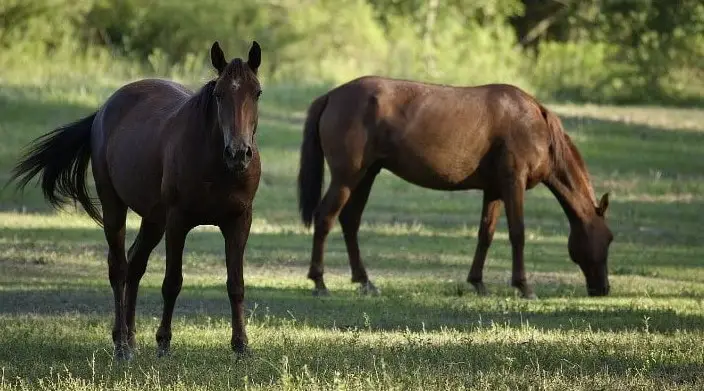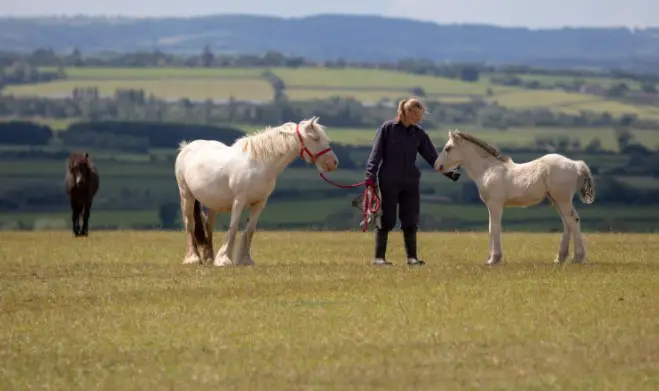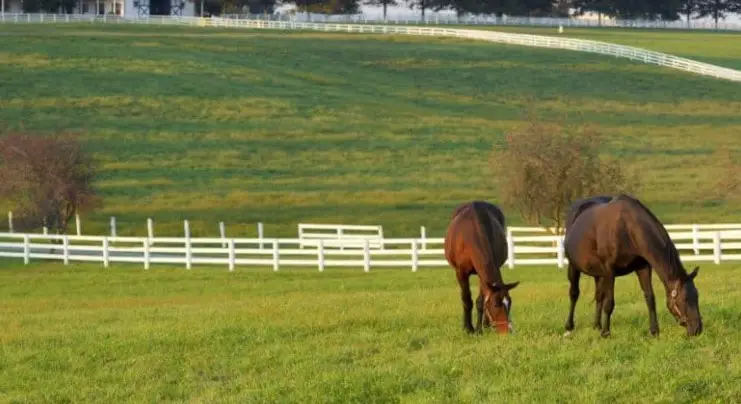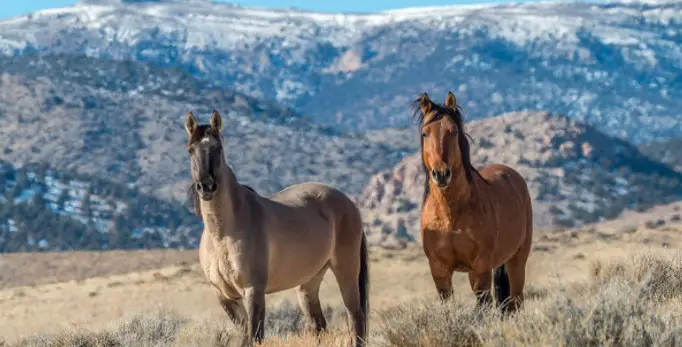Many factors come into play when maintaining a horse boarding business or a farm of one’s own. Healthy horses need ample space to wander. Even horses who spend most of their time in stables need sufficient room for turnout and grazing. The traditional method of determining land requirements has been based on acres. It is common practice to begin with one horse for every one-acre plot of land. To avoid overgrazing of pastures, two acres is the recommendation for the first horse and one extra acre for each new horse.
This recommended acreage does not take into consideration municipal zoning laws, federal stormwater rules, management methods, horse usage, as well as the terrain’s capacity to maintain each horse. Running a horse farm or facility is a lot of labor, and you shouldn’t get into it without some prior experience.

Why Do I Need to Worry About Acreage?
While it is true that horses can live practically anywhere on a small amount of land, there are several drawbacks to a minimal approach. To retain your horse on limited land, you will have to consider these difficulties.
Overgrazing may be the biggest challenge when you have a small amount of land to work with. Your horses won’t get the most out of their pasture time if there isn’t enough room for them to graze. As a result, it’s usually preferable to give your horses more space rather than try to squeeze them into a small area.

Unlike the other considerations we discuss, this issue does have a short-term solution in a pinch. You can always feed your horses hay and grain if your pasture isn’t growing enough grass. They are a good substitute for fresh grass in terms of nutritional content.
Manure piles are a unique source of problems for equestrians of any level of expertise. In addition to being a nuisance for you and your neighbors, a massive mound of manure on a tiny area of land may serve as a breeding ground for parasites, flies, and other pests. Your manure pile may also be washed away by rain, contaminating your land. Keeping your manure pile away from the parts of your farm you use daily is much easier with more acreage.
Another typical annoyance for horse owners is mud pools. There are fewer possibilities to avoid mud puddles on smaller land.
Last but not least, if you keep your horses on a small plot of land, they will have less opportunity to get exercise. Horses are unable to exercise freely in a limited turnout space. As a result, you’ll need to set aside extra time each day for productive pursuits and ways for them to stay fit.
The Traditional Approach to Determining Land Capacity for Horses
The land’s carrying capacity for horses has long been a source of contention among equestrians and horse owners. While horses thrive on large acreage, many horses can survive with less land. Horses are often kept on tiny plots of land, with little reliance on the ground for food.
When estimating land capacity, it’s a decent rule of thumb to use 1 1/2 to 2 acres of open, intensively maintained land for each horse. 210 feet by 210 feet is how much an acre measures in square footage. Two acres of well-managed pasture or hayland should be plenty for a small herd. However, this varies significantly from region to region.

As previously said, most equestrians advocate a minimum of one to two acres of property for your first horse. They advocate adding one extra acre to your space for each new horse. However, this quantity of acreage may not be essential for smaller horses. While you may dream of owning a vast farm covering hundreds of acres, you may effectively maintain your horse on less land with careful management and control.
Another technique to determine the number of horses you may have on your property is to assume 1,000 pounds of horses for two to three acres of land. This will provide for enough grazing, turnouts, and land management.
However, these standards vary significantly by region. In the southern part of the US, if the pasture is adequately maintained and watered, two to ten acres may provide a horse’s feed demands.
The grazing requirements may be met on 2-10 acres of well-managed and irrigated pasture in the West of the United States. You may need up to 30 to 38 acres per horse to satisfy its overall fodder requirements in non-irrigated dryland pastures.
Land Management
It’s not enough to just have acreage for your horses. Keeping the area green and fruitful to satisfy your horses’ needs will require a lot of time and effort on your part. The grass will die with too much livestock on the land and turn into an uninhabitable swamp. By preventing the earth from adequately absorbing and draining, too many weeds may lead to polluted water discharge. As a result of accumulated manure, there may be less grazing space and a decrease in overall land quality. Every day, a lot of pre-planning is necessary to avoid these problems.

What to Consider When Determining How Much Land You Need
Equestrians have worked to better understand the land demands of horses due to acreage restrictions. There are a few elements to consider when figuring out how much acreage you’ll need for a horse farm or boarding stable, regardless of your goals. Among which are the following:
Your Horse Breed
All horse breeds aren’t created equal, as you know well. Certain horse breeds do well in small pastures, but others need more room to stay healthy. The specific needs of your horse breed should be taken into consideration while searching for a new home. On the other hand, if you plan on boarding horses, you should overestimate how much land you need for each horse.
The Purpose of the Land (Exercise or Nutrition)
If you’re an equestrian, you already know that horses have a wide range of demands. Consider this while deciding how much land you’ll need for your horse’s grazing. What will be done with the land? Is the ground going to be the primary source of feed for your horse, or is it just additional space for grazing? Do you intend to engage in daily physical activity in a structured manner, or are you counting on turnouts? These questions will help you determine the suitable acreage for your horses. For your horse to get proper nutrients from the soil, you must give it a sufficient amount of space. If, on the other hand, the area is to be used mainly for exercise, the size of the space is less significant than the layout.
Check the Local Zoning Laws
In several parts of the nation, there are zoning laws and restrictions on how near horses may be kept to other houses or water sources. You should do your homework on these zoning regulations since they might increase the amount of property you need.
Affordability of Horse-Friendly Land
Certain lands may be more adequate to maintain horses than others due to their condition. When figuring out how many horses your property can sustain, it’s critical to consider the quality of your soil. Additional area for your horses may be necessary if your soil is less productive or of lower quality.
Tips for Keeping Horses On Limited Acreage
If you only have limited land or you are willing to keep your horses on limited acreage, there are a few tips that could help you along the process.
Firstly, regularly testing and fertilizing your pastures is an excellent approach to prevent overgrazing. This will improve soil quality, enabling the field to flourish. You may also rotate your pastures using temporary fences.
A fantastic technique to deal with enormous amounts of manure while simultaneously providing your pastures with natural fertilizer is to compost it. Make sure your manure pile is twice as long at the base as it is tall to decompose it properly. Composting manure in this way is more effective since it reaches the appropriate temperature. However, you’ll have to put in a little more work if you want to start composting. For massive dung heaps on small plots, this is the most efficient and successful management method.
There are many creative ways to implement turnouts with temporary fencing, as we previously highlighted. Use your paddock to build a running track for horses. Place feed and water stations at regular intervals along the way to encourage your horses to work through it.
Regular turnouts aren’t enough if you have to confine your horses to a small area; you’ll also need to emphasize deliberate exercise. To guarantee your horse’s health and well-being, you may want to try several different activities, including riding.
Wrapping Up
We know that horses may flourish on smaller areas of ground than the standard one to two acres. Horses may survive on a small amount of land if their owners are willing to think outside the box and develop innovative solutions. As a result, if you’re planning to open a boarding facility or stable, it’s ideal to have more land than you need.
You should also check local zoning statutes and restrictions in your location to be sure you’re not breaking any laws. Doing so will save you a lot of time and aggravation in the long run.
And last, as a horse owner, you have a responsibility to provide your animals with the best possible living conditions. Keeping your horse outside your back door may seem perfect, but it may not be the best setting for them to flourish in. If you’re unsure if your property is suitable for your horse, get a second assessment from an experienced equestrian. Your horse will be happy and healthy if they have enough room to graze and exercise.
